
Does the thought of doing science activities for teens cause fear and overwhelm in your homeschool day? You are not alone.
Even parents who can do science can feel intimidated by high school science for teens. Although many experiments that would be exciting and highly informative for teens are inaccessible in the average home, there are many experiments that are rich in learning and scientific exploration. It is also important to know that many easy science experiments which you may have done when your kids were younger, are still great experiments to do with teens, by delving deeper into the science and exploring the concepts involved. A cool chemical reaction, which has your little scientist jumping up and down with excitement, can be looked at through the lens of a deeper understanding now they are older.
For older children, a foundational piece is to understand the scientific method. This is vital regardless of which field of study your teen gravitates to. Teaching the scientific method trains teens to think like a scientist, and gain the skills to create their own experiments. Teens should be encouraged to write lab reports, and do their experiments with care and with a mind towards safety, therefore buying safety goggles is a great idea. There are many hands-on experiments and science activities for teens that can do at home.
There are also online experiments that can be done to explore deeper concepts. The PhET website is a great resource, and if you register with them, you can access their library of digital experiments for free. These walk students through experiments that enable them to explore the laws of science. PhET has resources for Biology, Chemistry, Physics, Earth Science, and Mathematics. My teens love PhET for science!
If your child is studying GCSE sciences, the PhET activity library is a perfect place to find the set practicals for the curriculum, as many of these require specialist equipment that are hard to replicated in the home.
Faith & Science Podcast
Parents and even teens will enjoy this podcast with Emma Cumminngs & Hannah Smith, our Maths & Science tutors.
Experiments for Biology
Perhaps biology experiments are the easiest to do at home. There is a wealth of hands-on science experiments which home educators can do to explore the natural world. For teens, it is also a good idea to invest in a decent quality microscope.
Here are a few science activities for teens studying Biology.
- Photosynthesis. Creating experiments that explore photosynthesis can be easily achieved with plants. A simple experiment is to take 3 identical plants. Keep one at room temperature, watered regularly, a second place in a dark place; but also at room temperature, also well watered; and the third keep in the light but without water. Monitor them over a week and see how they look at the end.
- Microscope activities. Learn how to prepare a slide for a microscope. Use the thin layer under an onion skin to look at plant cells under a microscope. Onion works well, as this layer is very thin, and easy to remove from the onion. The structures can be enhanced by dropping a small amount of iodine on the sample.
- Osmosis: Investigate osmosis by cutting identical sized cubes of potatoes. Place one is pure water, one in sugar solution and the third in salt solution. Ensure they are all the same temperature. If you have accurate scales, weigh them before and after. The data can be graphed, and percentage increase/decrease in mass can be calculated. The experiment can be further developed to make different concentrations of solutions.
- Starch test. This is a foundational experiment in high school biology. Biologists used iodine to test for the presence of starch: it will turn from blue/black to a brown colour. Beyond simply testing substances for starch, this can be developed to investigate enzymes. Our saliva has the enzyme amylase. This breaks down starch into sugars. Take a cracker and chew it, keep chewing until the taste becomes sweet. Don’t swallow it. Test a piece of uneaten cracker, then take some chewed cracker and test it for starch.
- Measuring the species in a habitat. Biologists use quadrants to measure the number of species in a habitat. A quadrant is a 1㎡, this can be made by taking four 1m lengths of wood and screwing them together. Go to a parkland, meadow, or woodland and count the number of a species within your quadrant, repeat this in different locations to see how the density changes.
- Capillary Action: This is an easy experiment, which shows the underlying biology of plants. Take fresh celery, slice it up the stem about a third of the way. Place one half in a beaker of red dyed water, the other next to it in a beaker of blue dyed water. The capillary action of the celery will draw the water up, and you will see the colour change. This can also be fun with white flowers (carnations are good) in a vase of water with food colouring of your choice!
- The human body is fascinating! Investigate fitness and health, by investigating recovery times after exercise. This is a great activity to do with friends or in a home education coop. Full instructions are on the Crest Award website. Broaden the scope of your experiment with these additional fitness activities for teens.
Experiments for Chemistry
Chemistry is a linchpin subject: connecting the world of physics to the world of biology. Not only is it a great choice of science for kids who are unsure what to study scientifically, chemistry experiments are fun! They demonstrate chemical reactions. There are many chemistry experiments that can be done in the home with simple ingredients that are readily found in the kitchen.
As a starting point for high school chemistry, being able to demonstrate that a chemical reaction occurs when there is a fundamental change in the chemical bonding of the reactants is a key concept to learn. This can be seen by a change of colour, smell, the release of a gas, or in the case of exothermic reactions heat, and conversely with endothermic reactions such as a drop in temperature.
Some key pieces of equipment for chemistry would be: measuring beakers, measuring cylinders, accurate scales, a thermometer, test tubes, and a test tube holder. Another useful piece of equipment is a methylated spirit Bunsen Burner. The Kitchen Chemistry shop on eBay is a great place to pick up chemicals, kits and equipmentif you are in the UK. For USA homeschoolers, we recommend Home Science Tools
Here are a few science activities for teens studying Chemistry.
- Neutralisation of acids and alkalis. You may not want to have strong acids, or alkalis in your home. However, you probably already do have some pretty good ones on hand. Household items like vinegar and lemon juice are acidic. If you have hydrogen peroxide, this is also a weak acid (and is also a useful chemical to have for science experiments). Bleach (as well as other strong household cleaners), and bicarbonate of soda (baking soda in the US) are alkali. (also known as base). It is possible to make a very effective pH indicator by boiling up red cabbage, the strained liquid changes colour when mixed with the solutions of other chemicals of various pHs. Begin by looking at the colour changes of various household items with the indicator. Then take an acid and mix it with an alkali, you should see how the colour changes. Can you make the colour go back to the neutral colour? Neutralisation reactions are also exothermic in nature. Can you detect a temperature change?
- Electrolysis. This is the process of “splitting” water with electricity. Using a 6V battery, 2 pencils, 2 cables with crocodile clips on the end, and a beaker of water. Sharpen both ends of the pencils, so the graphite is showing. Connect the battery terminals to the pencils and then place the pencils in water. Watch for bubbles to appear. This can be repeated with different solutions, sodium chloride (salt) will release chlorine gas, you can use pH paper to detect the change of pH from the gas. However, be warned, chlorine is poisonous, don’t breathe it in.
- Chromatography. Coffee filter paper can be used instead of chromatography paper. You will also need rubbing alcohol. Place a dot of different colour pens in a line at the bottom of the paper. Place the paper into alcohol solution, so the dots are NOT submerged, but just above the alcohol. The alcohol will spread up the coffee filter paper and separate the different colours in the ink.
- Make a Bath Bomb: this is a cool science experiment that uses the principles of neutralisation to make a bath bomb. Full instructions are found on the Royal Society for Chemistry’s website. This makes a great rainy day activity, or can be used to make STEM inspired gifts.
- Making Crystals. Crystal formation unlocks the hidden bonding at an atomic level. The different shapes allow chemists to understand the atomic structures. Therefore, growing different crystals and studying the shapes is a brilliant exercise when studying bonding. Easy crystals to grow as home educators are: salt, and sugar. However, borax is readily available and easy to grow. Crystal growing begins with the formation of a super-saturated solution. This is a solution which cannot dissolve any more of the solute. If you want to take this further, try making, a Copper Sulphate crystal, this science activity takes time to grow, if you keep the crystal suspended in the solution for weeks you can grow a pretty large crystal. If your child likes extended science projects, you can create a crystal exploration project, this would also make a great science fair project idea. Gather different powders to make crystals from them: borax, sugar, salt, copper sulphate, Epsom salts, and alum. Compare the different colors and shapes. WARNING: only use chemicals you, the parent feel confident using safely alongside your teen!
- Make Slime: This is an activity for kids of all ages. But for teens, it is an opportunity to study the properties of a polymer. In making slime, it’s interesting to note non borax recipes that use contact solution, as still using borax as borax ions are present in contact lens solution. So pure borax powder is a cheaper option, and you can use your borax to make crystals.
- Polymer properties: The properties of polymers can be further explored by studying how a rubber band behaves when heated. This shrinking band experiment is super easy to do at home. This could be adapted to look at how different brands of rubber bands act differently.
- Make ice cream in a plastic bag. This is a fun activity in the summer holidays. It may not be specific to teens, but it demonstrates ideas of melting/freezing points, and who doesn’t love ice cream! All you need is double cream, ice cubes, salt, and two bags. Add the salt and ice to one bag and the cream to the other. Place the cream bag (ensure properly sealed) inside the ice bag and shake vigorously. The cream will thicken and turn to ice-cream.
- Molecule Making. Building models of molecules is not only good for studying the shapes of the molecules, but the way atoms bond reveals the underlying chemistry of the atom.
Experiments for Physics
Physics experiments can be difficult for home educators, as they often require specialist equipment. However, for important experiments like Ohmn’s Law, the Laws of Motion, and optical experiments these can be achieved using PhET labs online.
There are a number of physics experiments that can be done at home to investigate key physics principles.
Here are a few science activities for teens studying Physics.
- Investigating Density. Investigate what density is, and learn how to measure the density of any object. This has the added bonus of exploring some of the history of science by looking at the discoveries of Archimedes.
- Create a Simple Motor. A simple motor can be made with a battery, paper clip, neodymium magnets and copper wire. It is important to note that if you use copper wire that is used in jewellery making (this is easy to get hold of online) it will be coated in a thin layer of clear plastic, you will need to rub the ends with sand paper to remove this, otherwise you copper is insulated. This can be a little fiddly, but it shows the principles of a current carrying wire, in a magnetic field will experience a force acting upon it. This is a key concept in physics and is used in anything that has a motor.
- Snap circuit kits (or similar). These are excellent for teaching the concepts of electrical circuits. You can also use this to investigate conductors and insulators, by building a simple circuit with a lamp, and using different items to close the circuit to see if they conduct electricity.
- Refraction: Refraction can be studied by using a block of glass or acrylic, and a simple laser pointer (WARNING: although these are low powered they are still dangerous and should never be pointed at someone’s eyes). As the light travels between mediums it will bend. You can use a protractor to measure the angles of refraction. Light will also be refracted through a glass of water.
- Rockets and the Laws of Motion: This Crest Award investigates how rockets work. The crest awards allow students to gain a UK recognised award and can be completed by home educators. The laws of motion can also be studied by making a bottle rocket or investigating why we wear seatbelts.
- Sound waves. Sound can be explored by investigating how sound is generated by various musical instruments. There are apps that you can download to a mobile device that turn your phone into an oscilloscope. This will allow you to learn how to read the frequency of the sound waves and see how different pitched notes change the shape of the wave.
- Make a pendulum. This science activity for teens can be done by using a piece of string with a heavy bolt tied to the bottom. Hammer a nail into a board of wood and see how the length of the string affects the period of the pendulum swing. Repeating the experiment will increase the accuracy of the results. If you want to take this to another level, and you fancy a challenge, you could build a pendulum wave array.
Astronomy
Astronomy is not always associated with fun science activities for teens, but there are a few science experiments that teens can do for astronomy. Teens can also keep an astronomy journal of their observations. By regularly stargazing teens will gain an understanding and knowledge of the night sky. They can learn more in depth about the features of the moon, and journal how the phases change through the month.
Here are a few science activities for teens studying Astronomy.
- Design a space capsule: Also known as the egg drop challenge, teens use a hard-boiled egg to design a capsule to keep it safe when dropped from a height. Test your capsule by dropping it from an upstairs window. Consider adding a parachute to slow the descent.
- Measure the circumference of the earth. This can only be done around the summer solstice (~ June 21st). Instructions are on the Schools Observatory Website.
- Make a sundial. Sundials may be an ancient technology but they have a lot of complex physics. And can be used to calculate your exact longitude.
- Make a solar oven. This is just a fun summertime activity for the whole family. It is so much fun to make smores in your solar oven on a hot summer’s day.
-
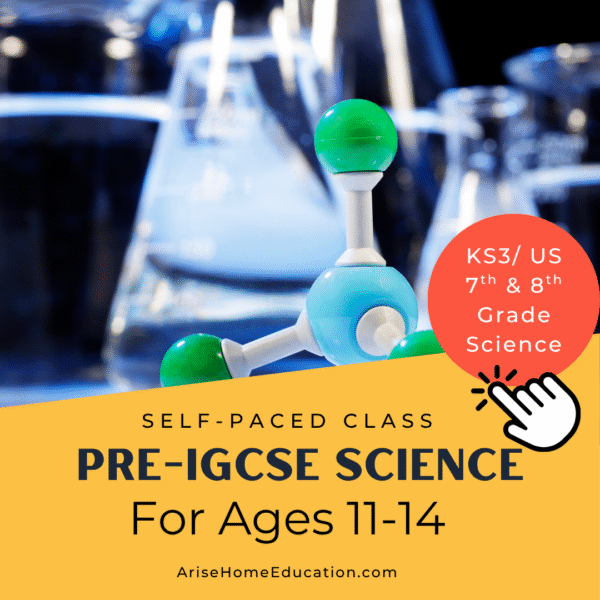 Pre-iGCSE Science for Ages 11-14 (KS3)£72.22
Pre-iGCSE Science for Ages 11-14 (KS3)£72.22 -
 Astronomy Curriculum: A Self-Paced Introduction for High School£72.22
Astronomy Curriculum: A Self-Paced Introduction for High School£72.22 -
Product on sale
 Astronomy Sample Lesson: Intro to Astronomy CurriculumOriginal price was: £9.00.£0.00Current price is: £0.00.
Astronomy Sample Lesson: Intro to Astronomy CurriculumOriginal price was: £9.00.£0.00Current price is: £0.00. -
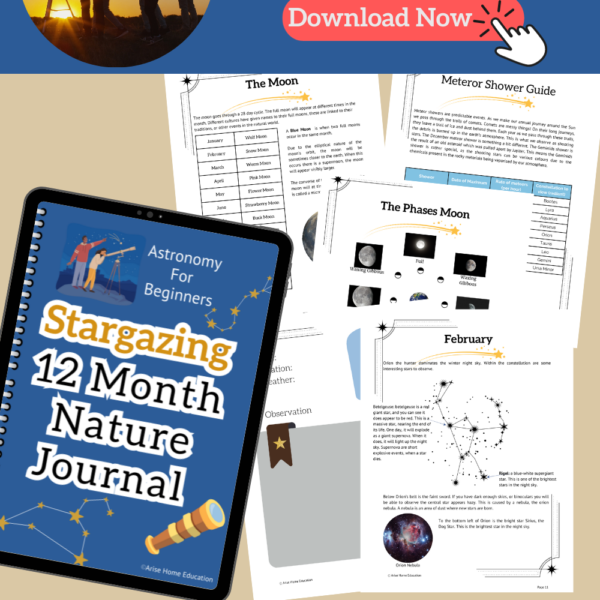 Astronomy For Beginners: A Stargazing Nature Journal for Kids£10.10
Astronomy For Beginners: A Stargazing Nature Journal for Kids£10.10
Science & Maths Q&A with Arise Tutors
Are Arise Live Classes A Good Fit For Your Teen?
Grab a live lesson bundle and learn about the course, the tutor, and the weekly homework load.
Great Science Links
Over the years I’ve used a variety of resources when creating science activities for teens. Her re some of my favourites.
- The Institute of Physics has a wealth of activities and resources on their website.
- The Royal Institute of Chemistry likewise has a library of resources and experiment ideas.
- The Crest Award, as mentioned above, is a great place for inspiration. The Crest Award can be run at home or in a coop setting. They have activities for all ages and abilities, as well as ideas to encourage scientific thinking for those who are not sciency! They also have a place on their website specifically designed to be done at home. Remember everything counts in high school, so the Crest Award can be added to a high school transcript, CV, or university personal statement.
- The PhET website is a place to conduct digital experiments. Teens can use their simulations to gather real data to explore key concepts like Ohms Law, or Specific Heat Capacity. Register with them to access their library of activities which educators have created for others to use free of charge.
- The Science Ceilidh website also has free resources to teach science through the medium of the arts. A clever idea to make STEM activities more accessible to students
- NASA has a website devoted to activities that explore space. These include activities to explore engineering skills, physics, astronomy, coding, maths, and biology. Their site’s activities open up the vast array of STEAM learning: Science, Technology, Engineering, Arts, and Maths. Enjoy!
- For kids who love science there are various STEM contests, the STEM learning website has a comprehensive list of these, over different disciplines.
- Add in some reading! This reading list for science and math is an excellent list for your book-loving teens.
STEM Science Activities for Teens
There are so many fun STEM activities for kids. If you have a science loving teen you may need more investment in their activities, perhaps join together with another home ed family to spread the cost? Look out for local university open days and science festivals to attend. If your teen does not enjoy science there are still those activities you can do at home which engage them with science, and the concepts involved without being too overwhelming. We often think of ‘enrichment activities’ as something we do with the arts, however we can add enrichment through science as well. Look at what your child is interested in. If they love art and music, incorporate those science activities which are more creative.
If your child is more interested in earth science or environmental science look into local junior ranger services that they can be involved in, or consider running a John Muir Award. All of these activities are enriching, as well as add weight to a high school transcript, personal statement, or CV. If you are using the Everything Count High School Planner all these activities can be added to it.
More Science Information And Resources
- Astronomy Curriculum For High School: A Faith-Based Guide
- What To Look For in a High School Astronomy Curriculum
- Science Activities for Teens: 12 Summer Vacation Ideas
- Middle School Science Curriculum: Top Picks

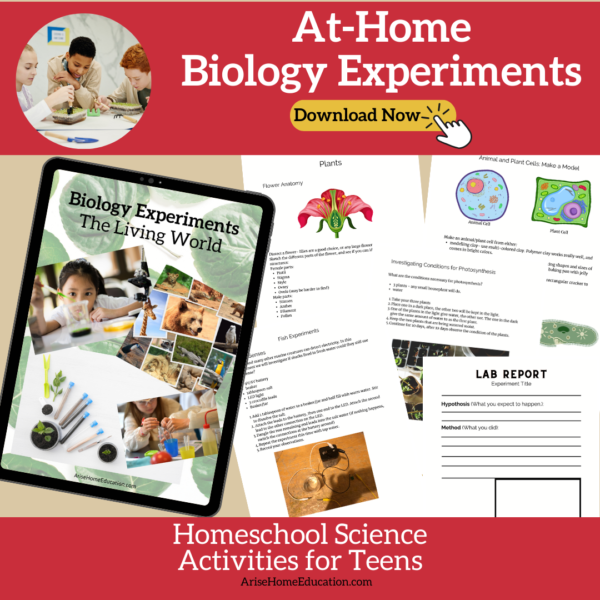

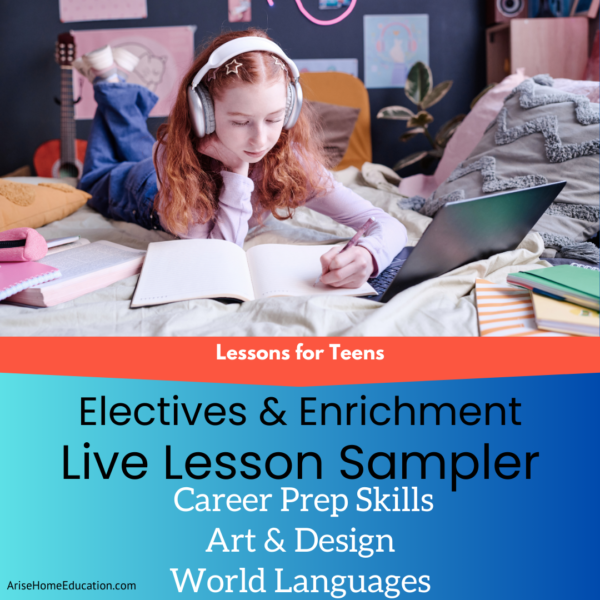
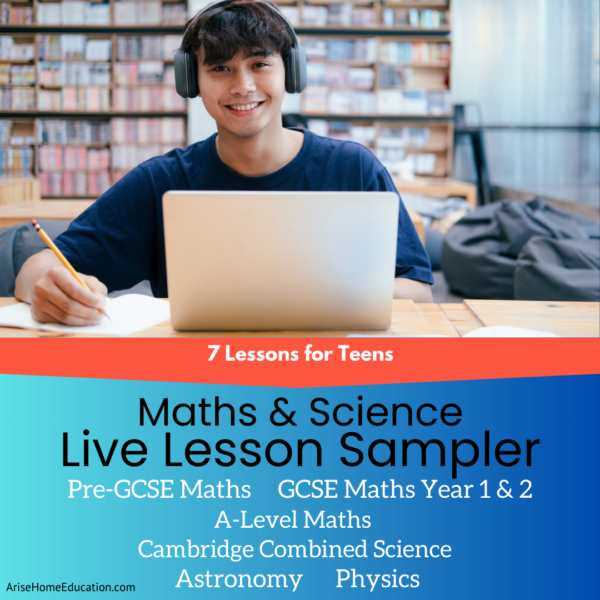







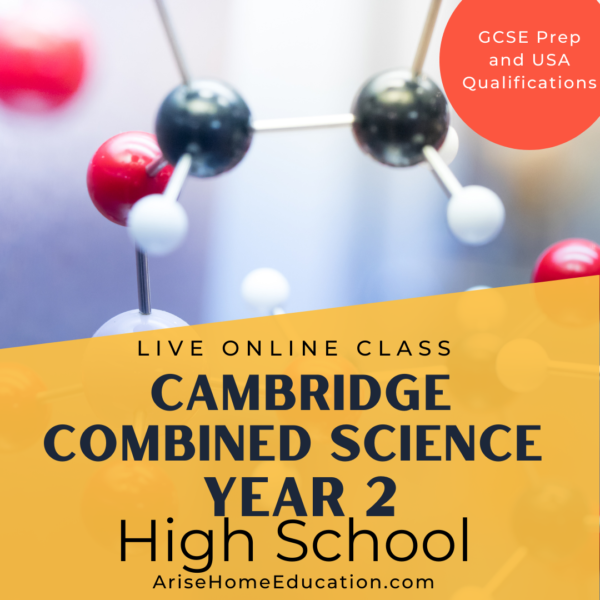




1 thought on “At Home Science Experiments and Activities for Teens”
Comments are closed.